Clean Water
Why
Access to clean water is a fundamental human need that must be met if we expect to sustain progress toward ending poverty, ensuring access to education, and improving global health standards.
By the Numbers
- Globally, 2 billion people use a drinking water source contaminated with feces. 1
- 771 Million people still lack access to basic drinking water services.2
- 122 million people still use surface water as their primary source of water.3
Access to clean water can change everything.
When families have access to clean water, it does more than improve health. Because, when your children are healthy, they can attend school regularly and excel in their studies. When you are healthy, you can take advantage of available economic opportunities. When you aren’t spending your hard-earned income on medication, you can invest in your family’s future.
We know how to make dirty water clean.
Our Rwandan volunteers know the value of access to clean water. And they are ready to do the long-term work to bring access to clean water to their communities. By equipping these local volunteers with the filter components, training, staff support, and the financial resources they need, we can help solve a global problem through local action.
After one year of having a filter, families report greatly improved health and fewer visits to the health clinic.
Where
Our current focus is in Rwanda. Sub-Saharan Africa is ranked as one of the world’s most underserved areas for access to clean water.

Rwanda, Africa
1°56.633′S 30°3.567′E
Rwanda is a poor, rural country located in south-central Africa. With 80% of its population struggling to make it by with mainly subsistence agriculture, the 1994 genocide decimated their already fragile economic base. Today, though making strides to regain their economic stability, the population below the poverty line remains at nearly 45%. Specifically, we work along the Nyabarongo River, serving 8 rural sectors that use the river and adjacent swamps as their main water source.
How
Solving a problem starts with understanding the problem, which is why 20 Liters' approach to making dirty water clean starts with education. Once you understand the issue more fully, you can start to advocate for solutions. But advocacy alone isn’t enough. So, finally, we find ways to put your hands to work to make dirty water clean.
Faustin’s Story
Our Solutions
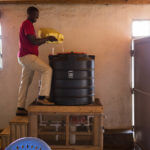
SAM2 Community Filter
SAM2s are large-capacity sand-and-membrane filters, providing clean water to 400 people a day. Primarily installed in health clinics or schools, these filters allow visitors to health clinics to take their...

SAM3 Household Filter
SAM3 (Sand And Membrane) filters are smaller versions of the SAM2 and are placed in households for a family and their neighbors. A SAM3 meets the World Health Organization's standards...
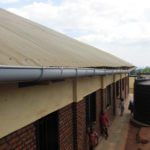
Rainwater Harvesting Systems
Rwanda is not the dry, desert-like area you might assume. Rwanda has long rainy seasons that provide 40 to 50 inches of rain a year—and it only takes 5 inches...
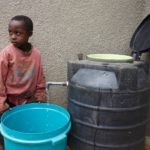
Slow Sand Filter
Slow Sand filters, often referred to as bio-sand filters are a common filter solution, widely used over the last century. Our 150-liter model generates enough clean water that two families...
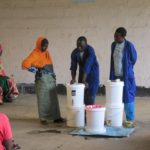
Health & Hygiene Training
Before a family receives one of our filters, they complete 20+ hours of training. They learn how the filter works, how to maintain the filter, and what to do if...
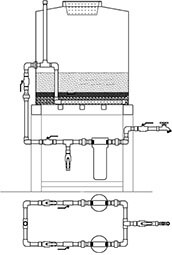
SAM2 Community Filter
SAM2s are large-capacity sand-and-membrane filters, providing clean water to 400 people a day. Primarily installed in health clinics or schools, these filters allow visitors to health clinics to take their medicine with clean water and bring a full container home with them. Being able to get clean water in the classroom means children don't have to miss school to fetch water. They can simply bring it home with them. A SAM2 requires no electricity or fuel and has no moving parts, making it the ideal solution for rural areas. Each school and clinic is trained how to use and maintain the filter, empowering them to be self-sufficient and address their own needs.
Our SAM2 Filter costs $2,000 and lasts 10+ years.
DONATE A SAM2 NOW
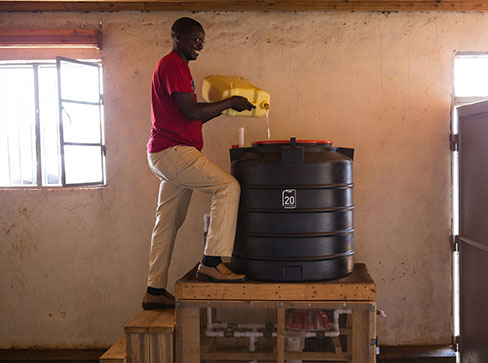
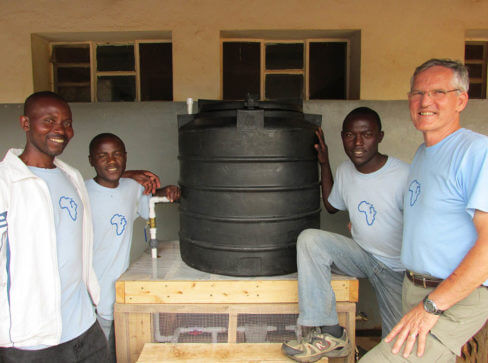
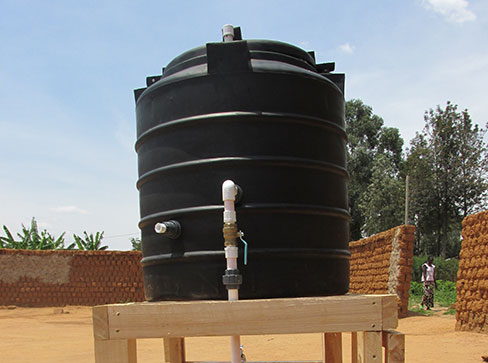
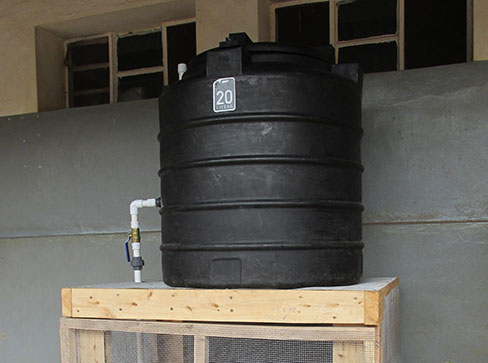
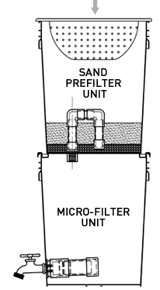
SAM3 Household Filter
SAM3 (Sand And Membrane) filters are smaller versions of the SAM2 and are placed in households for a family and their neighbors. A SAM3 meets the World Health Organization's standards and requires no electricity to function, making it ideal for the rural sectors where we work. Each household is taught how to use their filter and given the phone number of a local volunteer to call if they have any issues. Volunteers are also assigned to visit each family to make sure the families feel comfortable using their filter and the health and hygiene training they received.
Our SAM3 Filter costs $100 and lasts 10+ years.
DONATE A SAM3 NOW
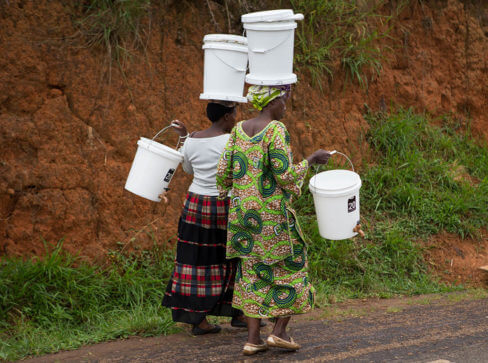
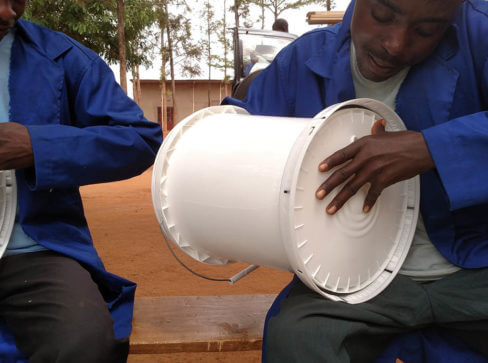
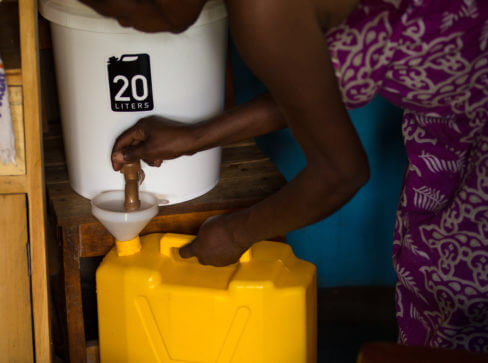
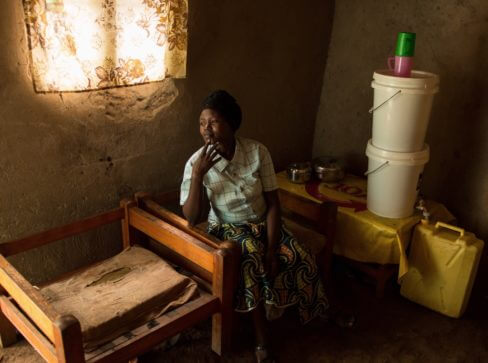
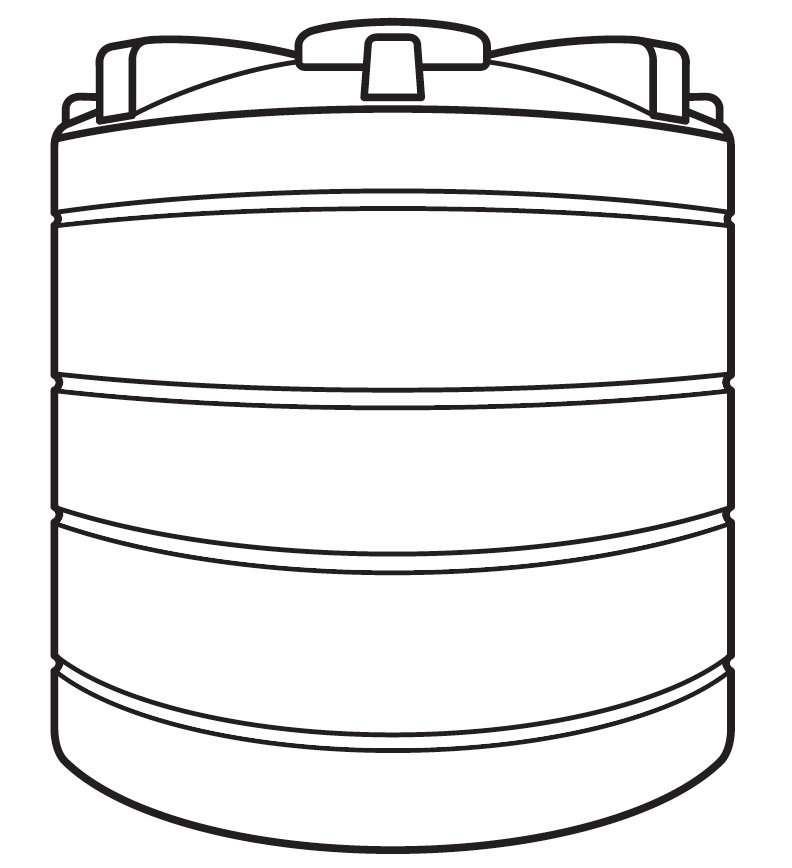
Rainwater Harvesting Systems
Rwanda is not the dry, desert-like area you might assume. Rwanda has long rainy seasons that provide 40 to 50 inches of rain a year—and it only takes 5 inches of rain to fill our 10,000-liter cistern. We place these tanks at centrally-located churches, which often reduce the time spent traveling to collect water from other sources. Churches sell the water at an affordable rate and use the income to maintain the system. Remaining funds are given to the poorest members of the community for school fees, uniforms, and other unaffordable costs.
A Rainwater Harvesting System (RWHS) costs $3,200
DONATE A RWHS NOW
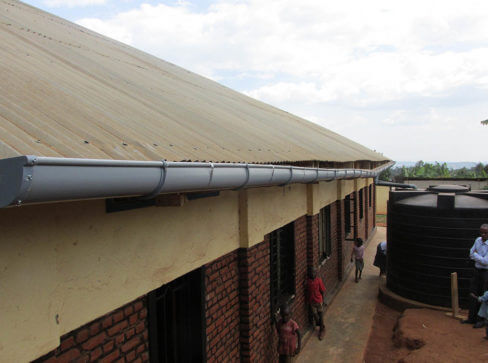
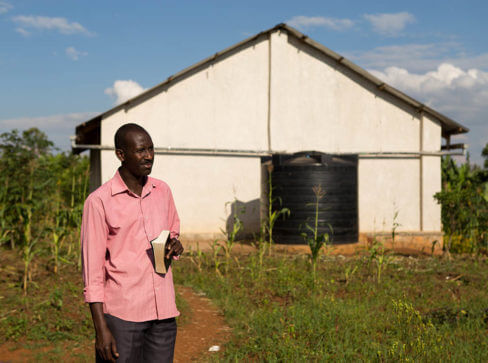
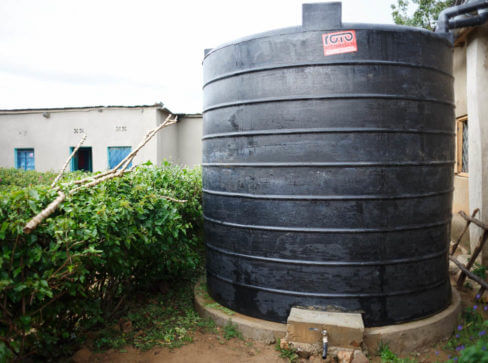
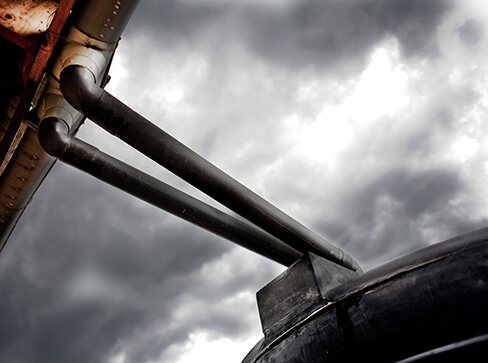
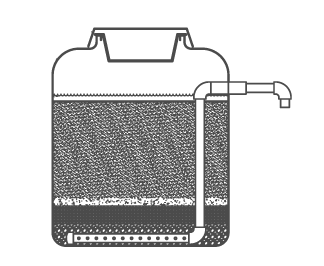
Slow Sand Filter
Slow Sand filters, often referred to as bio-sand filters are a common filter solution, widely used over the last century. Our 150-liter model generates enough clean water that two families can easily share the filter.
Utilizing gravel, sand, brass, and a layer of good bacteria living on top, this filter actually works best when the water source is the worst.
We use these filters in places where the water is so muddy and foul that no other filter could handle it.
Each household is taught how to use their filter and given the phone number of a local volunteer to call if they have any issues. Volunteers are also assigned to visit each family to make sure the families feel comfortable using their filter and the health and hygiene training they received.
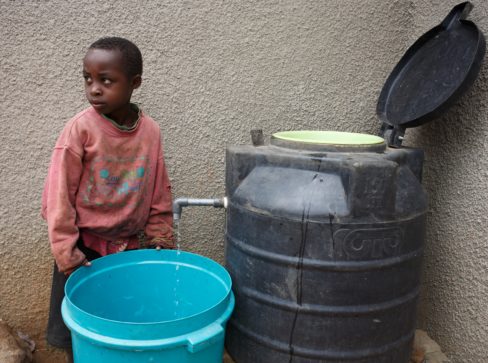
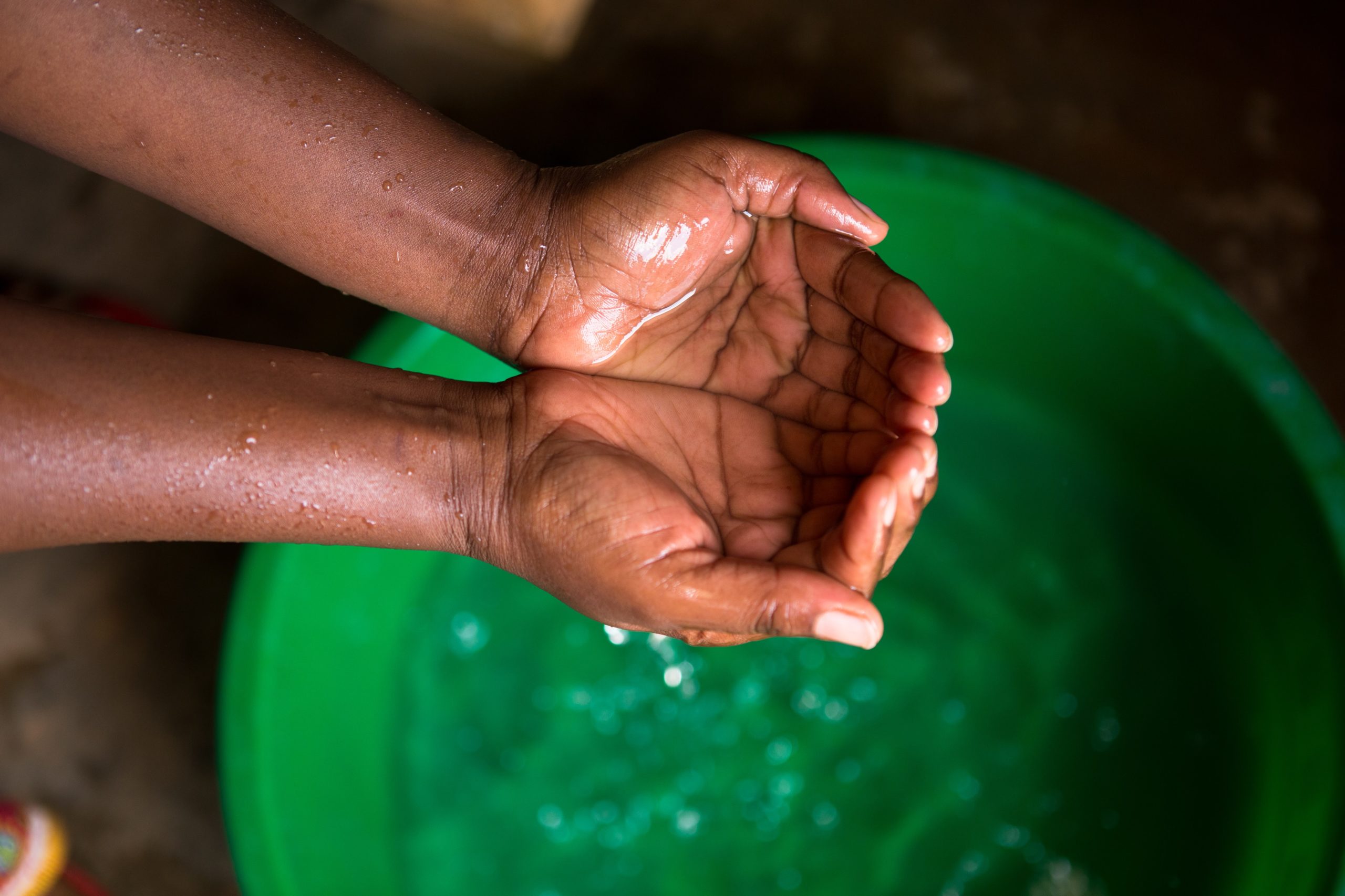
Health & Hygiene Training
Before a family receives one of our filters, they complete 20+ hours of training. They learn how the filter works, how to maintain the filter, and what to do if the filter stops working. But more importantly, our volunteers spend time discussing hygiene practices like hand washing.
Why? Because education is what takes a few assembled pieces of hardware and turns them into a sustainable solution that can make a family and the community healthier. While it is a convenient story that technology solves the problems of access to clean water and sanitation, it’s more complicated than that. Take a 20 Liters Household Filter.
If you fill a jerry can with dirty water, put that water into a filter, and capture the clean, filtered water in that same jerry can – your water is dirty again.
You might filter your water into a clean, open container. If you do, your water may not remain clean for long. Because if you’re using an open container, things can fall into that water. Or, insects can breed in that water. Either way, the result is dirty water.
Maybe, you’re drinking clean water. But, you’re preparing and eating your food without washing your hands. You could still be ingesting bacteria that is going to make you sick.
These are all incredibly common issues. And they can’t be fixed by technology. They require community engagement and training to solve. That’s why 20 Liters invests in training for all filter recipients and reinforces trainings with periodic home visits from volunteers.
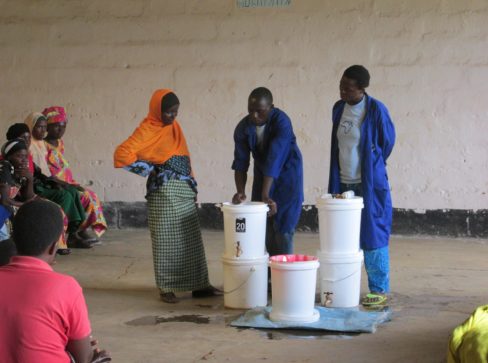
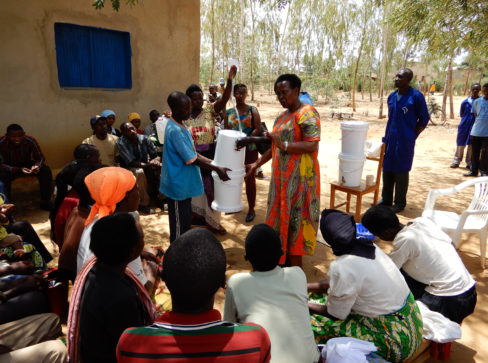
Training local people to implement the solutions empowers them to lead and make the program sustainable. Patrice has been a key volunteer since 2011.
WASH 101
WASH 101: Stay In Your Lane
If there is one thing that we’ve definitely established so far in this WASH 101 series, it is that there isn’t a single solution for making dirty water clean. Each… Read More
WASH 101: Physical Interventions – Filtration
Ladies and Gentlemen, we have finally made it to the final category of clean water solutions. And yes, we saved our favorite for last: Filtration. But before we get to… Read More
WASH 101: Physical Interventions – Sedimentation and Adsorption
At this point in this series, you may be questioning the rigidity of these solution categories. As we briefly mentioned in our post on antimicrobial metals, there are a few… Read More
WASH 101: Physical Interventions – Boiling and Distillation
We’re finally to our final category of solutions! Physical Intervention – specifically Boiling & Distillation. The physical intervention category is designed to cover the most basic, simplest forms of interventions…. Read More
